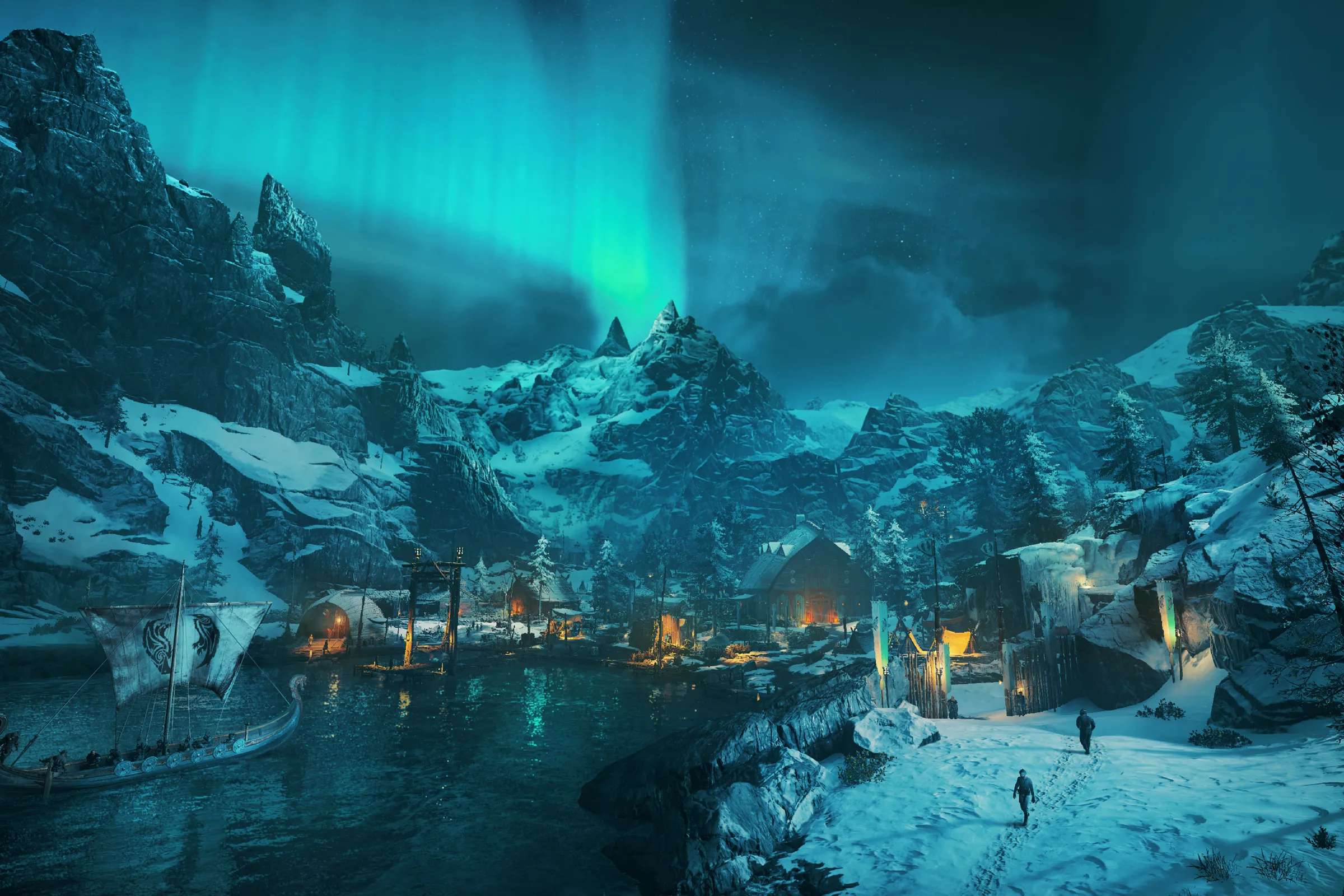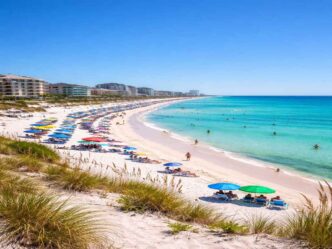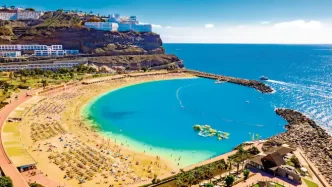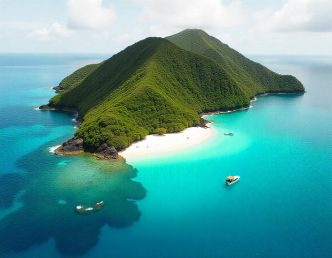Iceland: When To Go & How To Travel The Land Of Fire & Ice
Touching down in The Land Of Fire & Ice is sure to send a shiver down the spine no matter the season. Whether it’s the first glance at a snow-covered city in the depths of winter, admiring verdant greenery against striking black beaches in summer, or being dazzled by the northern lights on approach, Iceland certainly enthrals all the senses.
But picking the right season to visit Iceland will not just shape the appearance of this jewel between the North Atlantic and Arctic Oceans but also shape the whole way you travel. Camping, for example, is far more enjoyable in summer when the temperatures aren’t sub-zero and winds are less ferocious.
During my first winter visit to Iceland, I got to experience the unique Christmas traditions– book giving and Krampus– as well as the country, come alive with bonfires and fireworks for New Year. Magical and snow-covered as the land was, it made certain places impossible to reach, and alas, too much cloud and snow for the northern lights. So, paying attention to the seasons is essential depending on how you want to build your Iceland itinerary.
The Land Of Fire & Ice Best time to Road-trip
While, in theory, you could hire a car in Iceland and enjoy a driving adventure any time of year, there are a few considerations to keep in mind.
Firstly, off-road driving in Iceland is prohibited for the most part, and many of the F-roads (the highland roads) close completely in winter (from around October to May)– so if you wish to explore the interior, then the summer months will suit you best. The famous ring-road route is possible to explore all year round, and so you can decide what kind of conditions and landscapes you want to witness on this route, and then pick your visit accordingly.
The type of car or hire vehicle you should take will also depend on your itinerary, so get your plans in gear before hiring a vehicle. For example, if you do plan on doing some of the highland roads in winter, a 4WD is the best option– smaller cars might struggle, while the roads, for the most part, aren’t really designed for larger camping vehicles. If you are now a confident driver in snowy and icy conditions, then you might want to consider taking a tour instead.
Best time to camp in The Land Of Fire & Ice
It’s fair to say that Iceland is not a cheap destination– the high quality of life and solid wages ensure that prices, even by western European standards, are pretty high. Thus, one of the easiest ways to save costs on your trip is to reduce the accommodation budget. This, of course, comes with the unquestionable bonus of getting to the heart of the nature that Iceland is most famous for.
For most people, the summer months of June, July and August are likely the only appealing time to camp in Iceland A truly unique camping experience awaits, as the midnight sun doesn’t set for much of this period, so if you struggle to sleep without the curtains closed, a decent eye mask will be essential.
For those who want to camp in the shoulder seasons, to see the northern lights, perhaps, you’ll need to be more prepared with a very high-quality sleeping bag and tent. Winter is certainly not recommend for camping for the average traveler unless you are highly experience and prepared for this kind of expedition.
While wild camping, in theory, can be free, there are actually a lot of rules and considerations to make– specifically around where you are– for example, national parks and southern Iceland are a no-go. At the same time, in other areas, land ownership has to take into consideration, especially when couple with the no off-roading rule.
Luckily, there are plenty of affordable and some free designated campsites you can choose from, which will ensure you respect the magnificent nature of the land without falling foul of any laws. Even still, expect to pay EUR10+ per person per night, reflecting the general higher costs on the island.
Best time to take a tour around Iceland.
Well, this is a pretty easy answer because taking an unforgettable private tour is possible all year round.
Whether you opt for a multi-day summer expedition or short one or two-day trips from a base, there are plenty of operators on the island, thanks to the boom in tourism over recent years. Itineraries will suit all kinds of travellers, from those who want to simply visit waterfalls to hardcore adventure lovers looking to go deep into the wilderness of Iceland.
When the weather conditions start to change, in Autumn until Spring, those less confident with driving in snowy and icy conditions will find that taking a tour is a preferred option; just consider this into your costs when planning your trip to Iceland. We did a few different tours when we were there in winter, some day-trips, and other overnights with accommodation included, and they were ideal. The lodges, for example, had already book by the tour companies, meaning we had struggled to find out own accommodation at some of the most famous sights.
Likewise, if you wish to explore the highland roads during winter when the roads are ‘impassable’ and closed, then some specialist tour operators will be able to help you make this happen.
Best time to enjoy a city break in Reykjavik
Reykjavik is a small, compact but charming capital city– and it has plenty of great restaurants, bars and attractions in and around it to enjoy. Thus, it’s a great city break all year round and has massively grown in popularity since the airlines started offering short stopover deals for people to stay in the city whilst transiting between the Americas and Europe.
Some of the highlights of Iceland The Land Of Fire & Ice are easily accessible from Reykjavik by tour or driving, such as the famous Blue Lagoon, Þingvellir National Park, where two continents tectonic plates meet (you can scuba or snorkel between them) and countless waterfalls.
Of course, in summer, you’ll find the weather much more agreeable, and the depths of winter might be a bit wet, grey and miserable for some. Still, I loved our Christmas and New Year visit, especially because the NYE celebrations here are truly special. All across the islands, bonfires, flame-lit torches, and fireworks go off, all organised by the local residents, in what you can imagine would be a complete disaster of mismanagement, but in fact, show just how respectful and fun the people of this wonderful country are.
One thing to keep in mind, though, is how short the days can be in winter, you might only get five hours of daylight– not a problem to enjoy the hot springs in the dark, but for those who want to be out all day taking photos, summer is certainly the way to go.
Best time to see the Northern Lights in Iceland
For many, the main reason to visit Iceland The Land Of Fire & Ice is to catch a glimpse at those magical northern lights as they dance across the sky in a seemingly unbelievable way. I’ve been both in the peak time and the worst window to see them and actually didn’t get lucky on either, so managing your expectations will lead to fewer disappointments.
Seeing the aurora borealis isn’t just about when you visit, but also about the weather conditions. The main months for witnessing the northern lights are October through to March (remember, in the peak of summer, the sun never sets), and generally, between midnight and two in the morning are the best hours of the day. You will, however, need to keep an eye on the forecast (there are specific websites for the northern lights forecast) because you need a few things to align to witness them in all their glory; low cloud cover, a solar storm, and patience.
Many of the day-trips out of the city will only confirm a few hours before if it’s worth taking the trip, so plan to book this at the start of your holiday, so if you aren’t successful on the first try, you have more days to try and witness this breathtaking phenomenon.






